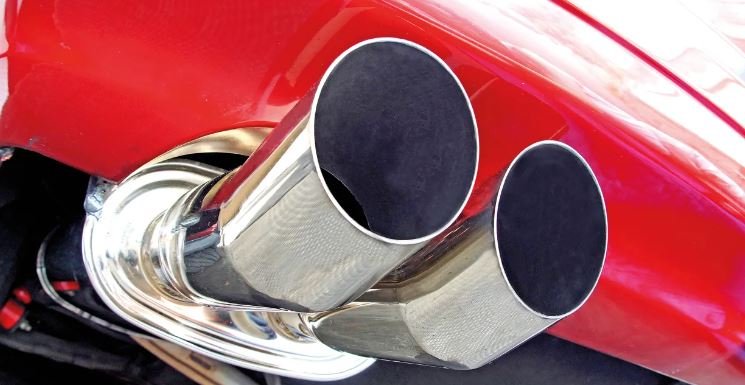Understanding car exhaust noise levels is crucial for vehicle enthusiasts and everyday drivers alike. The sound produced by an exhaust system can impact driving experience, legal compliance, and vehicle performance. This guide explores the factors influencing exhaust noise levels, including muffler types, materials, and design, and provides tips for managing and optimizing exhaust sound.

1. What Determines Exhaust Noise Levels?
Several factors determine exhaust noise levels, including the design of the exhaust system, the type of muffler used, and the materials employed. The engine’s characteristics also play a role. Together, these elements influence how sound waves are produced and managed within the exhaust system.
2. Role of the Muffler
The muffler is the primary component responsible for controlling exhaust noise levels. It uses various chambers and materials to dampen sound waves and reduce noise. Different muffler designs, such as chambered, turbo, and straight-through, offer varying levels of noise reduction and performance enhancement.
3. Materials and Construction
The materials used in an exhaust system can significantly impact noise levels. Stainless steel, for instance, provides a durable and corrosion-resistant option that can also influence sound quality. Titanium and carbon fiber are other materials that can affect both the weight and the sound of the exhaust.
4. Impact of Exhaust Design
The overall design of the exhaust system, including the length and diameter of the pipes, affects noise levels. Larger diameter pipes can allow more sound to escape, resulting in a louder exhaust note. The configuration of the exhaust, such as single or dual exhaust setups, also influences the sound produced.
5. Performance and Noise Trade-offs
While a louder exhaust may indicate increased performance, it is essential to balance noise levels with legal and comfort considerations. High-performance exhaust systems can enhance horsepower and torque but often produce more noise. Finding the right balance is key to achieving both performance and compliance.
6. Legal Considerations
Different regions have specific regulations regarding acceptable exhaust noise levels. It is crucial to understand and comply with these laws to avoid fines and penalties. Aftermarket exhaust systems should meet local noise regulations to ensure that the vehicle remains street-legal.
7. Customizing Exhaust Sound
For those who want to customize their vehicle’s exhaust sound, several options are available. Resonators, for instance, can be added to the exhaust system to fine-tune the sound. Adjustable exhaust systems allow drivers to control noise levels based on driving conditions and preferences.
8. Noise Reduction Techniques
Several techniques can help reduce exhaust noise levels without compromising performance. Installing a high-quality muffler, adding resonators, and using sound-dampening materials can effectively lower noise. Regular maintenance and inspections ensure that the exhaust system functions optimally, minimizing unwanted noise.
9. Maintenance and Upkeep
Regular maintenance of the exhaust system is vital for managing noise levels. Inspecting for leaks, rust, and loose components can prevent excessive noise. Replacing worn-out parts, such as gaskets and clamps, maintains the integrity of the exhaust system and keeps noise levels in check.
10. Conclusion
Exhaust noise levels significantly influence the driving experience, vehicle performance, and legal compliance. By understanding the factors that affect noise and implementing effective management techniques, drivers can achieve the desired exhaust sound while remaining within legal limits. Regular maintenance and thoughtful customization ensure that the exhaust system performs optimally, providing the perfect balance of sound and performance.


